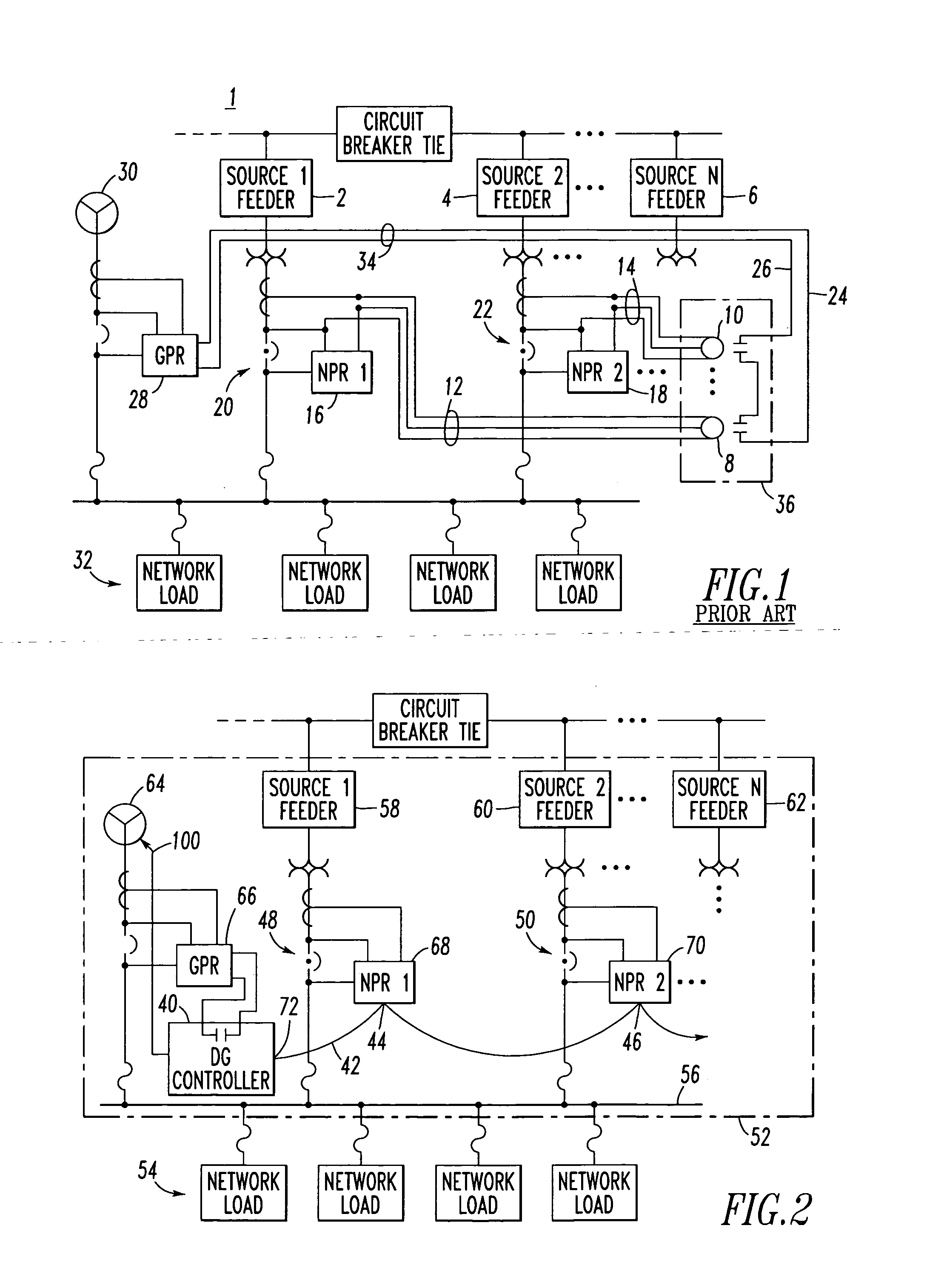Network system for safe connection of generation into a network power system
a network power system and network technology, applied in the field of network systems, can solve the problems of high cost of operation, network is not suited to export any power out of the network, and it is difficult to electrically connect distributed generation to the network power system
- Summary
- Abstract
- Description
- Claims
- Application Information
AI Technical Summary
Benefits of technology
Problems solved by technology
Method used
Image
Examples
example 1
[0033] The example communication network 42 includes a twisted pair, daisy chain among the interfaces 44,46 of the network protector relays 68,70 and the interface 72 of the controller 40.
example 2
[0034] The communication network 42 may be an INCOM network between the interfaces 44,46 of the network protector relays 68,70 and the interface 72 of the controller 40. Examples of the INCOM network and protocol are disclosed in U.S. Pat. Nos. 4,644,547; 4,644,566; 4,653,073; 5,315,531; 5,548,523; 5,627,716; 5,815,364; and 6,055,145, which are incorporated by reference herein. The network 42 or the controller 40 may include an uplink port (not shown) or communication port (not shown) to allow a supervisory system (not shown) to monitor the state of the various networked devices.
example 3
[0035] The interfaces 44,46 of the network protector relays 68,70 are associated with corresponding addresses. The controller processor 74 of FIG. 3 includes a polling table 76 and an auto-learning routine 78, which auto-learns at least some of the network protector relay interfaces, such as 44,46, on the communication network 42, and which adds the corresponding addresses of the interfaces of the network protector relays to the polling table 76. In this example, first, the distributed generation controller 40 powers up and auto-learns the nodes represented by communication-enabled network protectors 48,50 on the communication network 42. Then, after all nodes have been found, including displays, gateways and communication proxy servers (not shown), the addresses of those nodes are added to the polling table 76 along with the authenticated network protectors 48,50. Next, for the network protectors 48,50, the controller 40 polls each of those nodes, in order to read the corresponding...
PUM
 Login to View More
Login to View More Abstract
Description
Claims
Application Information
 Login to View More
Login to View More - R&D
- Intellectual Property
- Life Sciences
- Materials
- Tech Scout
- Unparalleled Data Quality
- Higher Quality Content
- 60% Fewer Hallucinations
Browse by: Latest US Patents, China's latest patents, Technical Efficacy Thesaurus, Application Domain, Technology Topic, Popular Technical Reports.
© 2025 PatSnap. All rights reserved.Legal|Privacy policy|Modern Slavery Act Transparency Statement|Sitemap|About US| Contact US: help@patsnap.com



